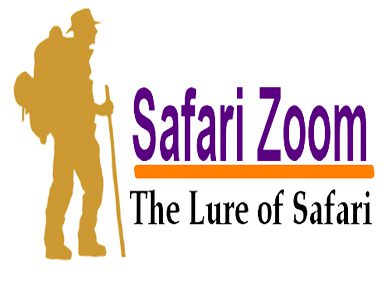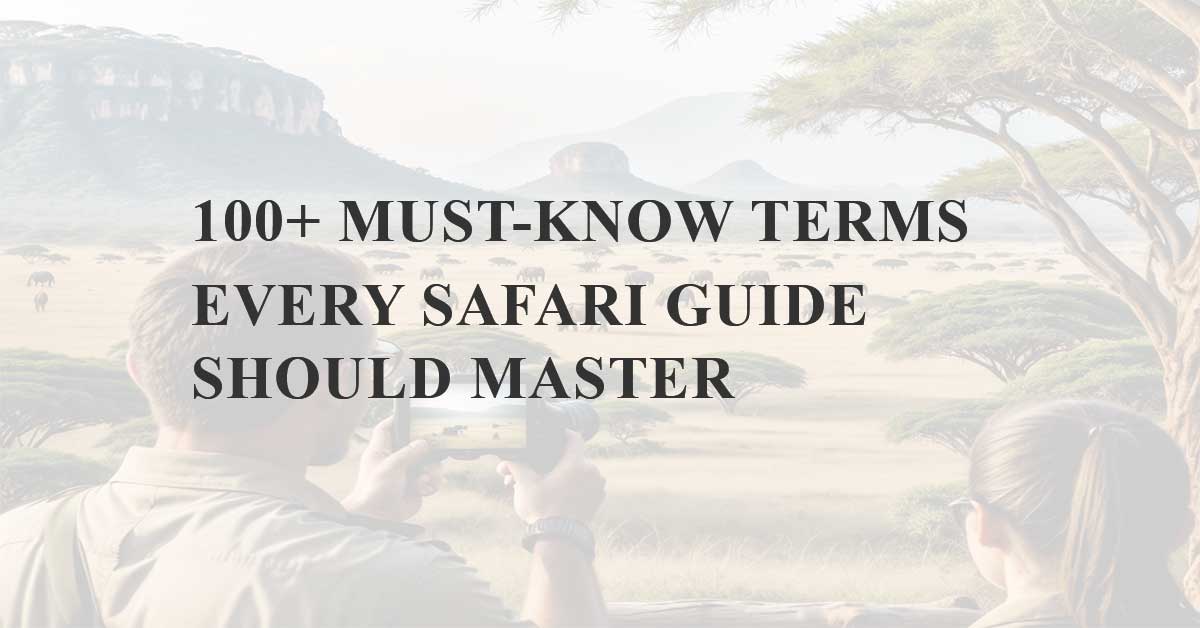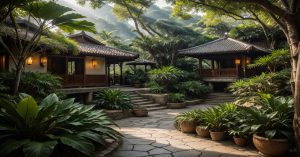100 Must-Know Terms Every Safari Guide Should Master.
In “100+ Must-Know Terms Every Safari Guide Should Master,” we invite you to explore the common vocabulary grouped in 10 groups used in the safari guiding industry that brings the safari adventure to life. From learning about the fascinating behaviors of the “Big Five” to navigating the stunning landscapes of savannahs and wetlands, this guide equips you with the knowledge needed to become a skilled and insightful safari guide.
1. Core Responsibilities and Guiding Concepts
1.Safari: A Swahili word meaning ‘journey,’ typically involving wildlife viewing in Africa.
2. Safari Guide: A guide specialising in leading wildlife safaris.
3. Game Drive: A guided excursion through a natural reserve or park to view wildlife.
4. Big Five: The five large African animals (lion, leopard, rhinoceros, elephant, and buffalo) often sought after by safari tourists.
5. Bush Walk: A walking tour through a natural reserve to observe wildlife up close.
6. Conservationist: A professional working to protect wildlife and natural habitats.
7. Game Warden: A person who enforces laws related to wildlife and their habitats.
8. Endemic Species: Species native to a particular region and found nowhere else.
9. Camouflage: Refers to the ability of animals to blend into their surroundings to avoid detection by predators or prey.
10. Habitat: The natural environment where an animal lives.
11. Wetlands: Ecosystems that are saturated with water, supporting diverse wildlife, especially birds.
12. Tracking: The skill of following animal footprints and signs in the wild.
13. Nocturnal: Animals that are active primarily during the night.
14. Wildlife Reserve: A protected area where wildlife is conserved and safaris are conducted.
15. Campsite: A designated area in the wild where safari tourists stay overnight.
16. Prides: Refers to a social group of lions. A pride typically consists of several related lionesses, their cubs, and a small number of adult males.
17. Territory: The area an animal or group of animals defends against others of the same species.
18.Savannah: A grassy plain in tropical and subtropical regions, often a prime safari location.
19.Safari Camp: A semi-permanent or permanent accommodation used during safaris.
20.Game Reserve: A large area of land where animals are protected and safari activities take place.
21.Wildlife Ranger: A person responsible for patrolling and protecting wildlife in national parks and reserves.
22.National Park: Protected areas where wildlife is preserved and tourists can observe animals in their natural habitat.
23.Safari Vehicle: A specialized vehicle designed for game viewing, often equipped with a pop-up roof, four-wheel drive, and essential tools like radios, first-aid kits, and spare tires.
24.Pop-up Roof: A feature in safari vehicles that allows passengers to stand and observe wildlife safely during game drives.
25.Biodiversity: Variety of life on Earth at all levels, including genes, species, and ecosystems.
26.Carnivore: Animals that feed on other animals, such as lions or cheetahs.
27.Herbivore: Animals that feed on plants, such as giraffes and elephants.
28.Omnivore: Animals that eat both plants and meat, such as baboons.
2. Skills and Qualities
29. Animal Behavior Interpretation: Understanding and explaining the behavior of wild animals to safari guests.
30. Bushcraft Skills: Survival skills required to safely navigate and live in the wilderness.
31. Fieldcraft: Techniques and skills used in the field for wildlife tracking and guiding.
32. Wilderness Navigation: The ability to navigate in remote areas using natural landmarks.
33. Safety Awareness: Ensuring guest safety in environments with potentially dangerous wildlife.
34. Wildlife Interpretation: Providing insightful information about the animals observed during the safari.
35. Flora and Fauna Identification: Recognizing and explaining plant and animal species to guests.
36. Sharp Observation: Ability to quickly spot animals and interpret signs of wildlife presence.
37. Stalking: Quietly approaching wildlife for close observation without disturbing them.
38. Resilience: The capacity to remain calm and composed in challenging outdoor conditions.
3. Guest Interaction
39. Safari Briefing: A detailed orientation given to guests before embarking on a safari.
40. Wildlife Photography Guidance: Assisting guests with capturing high-quality wildlife photos.
41. Safari Etiquette: Guidelines for behavior while on safari, such as staying in the vehicle and keeping a safe distance from wildlife
42. Engaging Stories: Sharing anecdotes and stories about wildlife and the wilderness.
43. Guest Safety Protocol: Guidelines shared with guests to ensure their safety in the wild.
44. Photographic Safari: A safari focused on capturing wildlife images.
45. Safari Guest Management: Managing guest expectations and experience during the safari.
4. Knowledge and Expertise
46. Wildlife Biomes: Different ecological regions such as savannas, deserts, or wetlands where safaris take place.
47. Endangered Species: Animals that are at risk of extinction, often the focus of conservation efforts.
48. Predator: An animal that hunts other animals for food.
49. Tusk: An elongated tooth, found in animals such as elephants, often targeted by poachers for ivory.
50. Lodge: A safari accommodation located within or near national parks.
51. Water Hole: A natural or artificial source of water where animals congregate.
52. Scat: Animal feces, used by trackers to determine animal presence and movement.
53. Anti-Poaching: Efforts and techniques used to prevent illegal hunting of wildlife.
54. Migration Patterns: Seasonal movements of wildlife, such as the Great Migration of wildebeest in Africa.
55. Ecological Balance: The relationship between predators and prey in an ecosystem.
56. Birdwatching: The observation and identification of birds in their natural habitat.
57. Prey: An animal that is hunted and eaten by predators.
58. Predator-Prey Dynamics: The relationship between predators and their prey in the wild.
59. Scavenger: Animals that feed on dead animals, such as hyenas or vultures.
60. Vegetation: Plants in a specific area, essential for the survival of herbivores.
61. Invasive Species: Non-native species that disrupt the ecosystems they invade.
62. Animal Markings: Recognizing and explaining unique characteristics or markings of animals.
63. Wildlife Conservation: The practice of protecting wildlife and their habitats to ensure biodiversity and the survival of species for future generations.
64. Wildlife Management: The process of managing wild species and their environments, often focusing on conservation efforts and sustainable tourism.
5. Safety and Regulations
65. Wildlife Safety: Practices that ensure both guest and animal safety during wildlife encounters.
66. First Aid Kit: An essential safety kit used during safaris to treat minor injuries and emergencies.
67. Off-road Permits: Licenses required for vehicles to leave marked roads during a safari.
68. Predator Safety: Specific guidelines to ensure safety when observing predators like lions or leopards.
69. Vehicle Safety Protocols: Rules for operating safari vehicles in rough terrains and among wildlife.
70. Animal Attack Procedures: Emergency steps taken in the event of a dangerous wildlife encounter.
71. Snake Bite Protocol: Procedures to follow in case of a snake bite during a safari.
72. Bushfire Safety: Guidelines to prevent and manage fires in the wild.
73. Weather Awareness: Ensuring preparedness for sudden weather changes during a safari.
6. Tour Types and Formats
74. Luxury Safari: A high-end safari experience with upscale accommodations and services.
75. Mobile Safari: A safari where the camp moves to different locations each night.
76. Walking Safari: A safari that focuses on walking tours rather than vehicle-based excursions.
77. Night Safari: A guided tour conducted at night to observe nocturnal animals.
78. Self-Drive Safari: A safari where guests drive themselves through a reserve or park.
79. Photographic Safari: A specialised safari aimed at wildlife photography.
80. Balloon Safari: A safari conducted from a hot air balloon, offering aerial views of wildlife.
81. Private Safari: A customised safari for a small, private group.
82. Fly-In Safari: A safari that involves flying into remote locations, often combined with guided tours.
83. Eco-Safari: A safari focused on conservation and minimising environmental impact.
7. Marketing and Promotion
84. Safari Reviews: Guest reviews specifically about their safari experiences.
85. Safari Packages: Pre-arranged combinations of accommodation, transportation, and safari activities.
86. Conservation Safari: Tours aimed at raising awareness and funds for wildlife conservation.
87. Safari Blogging: Writing content focused on safari experiences and wildlife.
88. Safari Influencers: Individuals who promote safari tourism through social media.
89. Wildlife Sponsorship: Offering guests opportunities to sponsor conservation efforts during their safari.
90. Travel Fairs: Promotional events that showcase safari and travel-related services.
91. Digital Safari Marketing: Using online platforms and social media to promote safaris.
8. Evaluation and Improvement
92. Safari Evaluation Forms: Surveys given to guests to evaluate their safari experience.
93. Guide Performance Review: Assessing the effectiveness of safari guides based on guest feedback.
94. Wildlife Viewing Success: Measuring the success of safaris based on the number and variety of animals observed.
95. Guide Certification Programs: Training programs designed to certify safari guides.
96. Guest Satisfaction Metrics: Measuring guest satisfaction to improve safari offerings.
97. Staff Training Programs: Ongoing training to improve the skills of safari staff.
98. Vehicle Maintenance Logs: Ensuring safari vehicles are regularly maintained for optimal safety.
9. Tourist Behaviour and Trends
99. Animal Enthusiasts: Tourists who are passionate about wildlife and nature.
100. Eco-Tourism Trends: The growing demand for eco-friendly safari experiences.
101. Wildlife Conservation Awareness: Educating tourists about the importance of wildlife conservation.
102. Virtual Safari: The emerging trend of online or virtual safari experiences.
103. Solo Safari: Trends of individuals going on safaris alone for a personal wildlife experience.
104. Family Safari: Safari tours designed specifically for families with children.
105. Adventure Tourism: Tourists seeking thrilling safari experiences like walking safaris or night safaris.
106. Sustainable Tourism: A trend toward eco-friendly and conservation-focused safaris.
107. Cultural Safaris: Combining wildlife safaris with cultural experiences in local communities.
10. Cultural Sensitivity and Ethics
108. Animal Ethics: Ethical practices for observing and interacting with wildlife during safaris.
109. Wildlife Protection Laws: Legal protections for animals that safari guests should be aware of.
110. Ethical Photography: Teaching guests about ethical practices when photographing wildlife.
111. Responsible Safari: Encouraging safaris that do not exploit wildlife or damage the environment.
112. Community-Based Tourism: Involving local communities in safari tourism to promote cultural sensitivity.
113. Anti-Poaching Campaigns: Raising awareness about the dangers of poaching and promoting anti-poaching initiatives.
114. Cultural Respect: Educating guests on respecting local traditions and customs during safaris.
115. Eco-Friendly Practices: Encouraging guests to follow sustainable practices during safaris.




